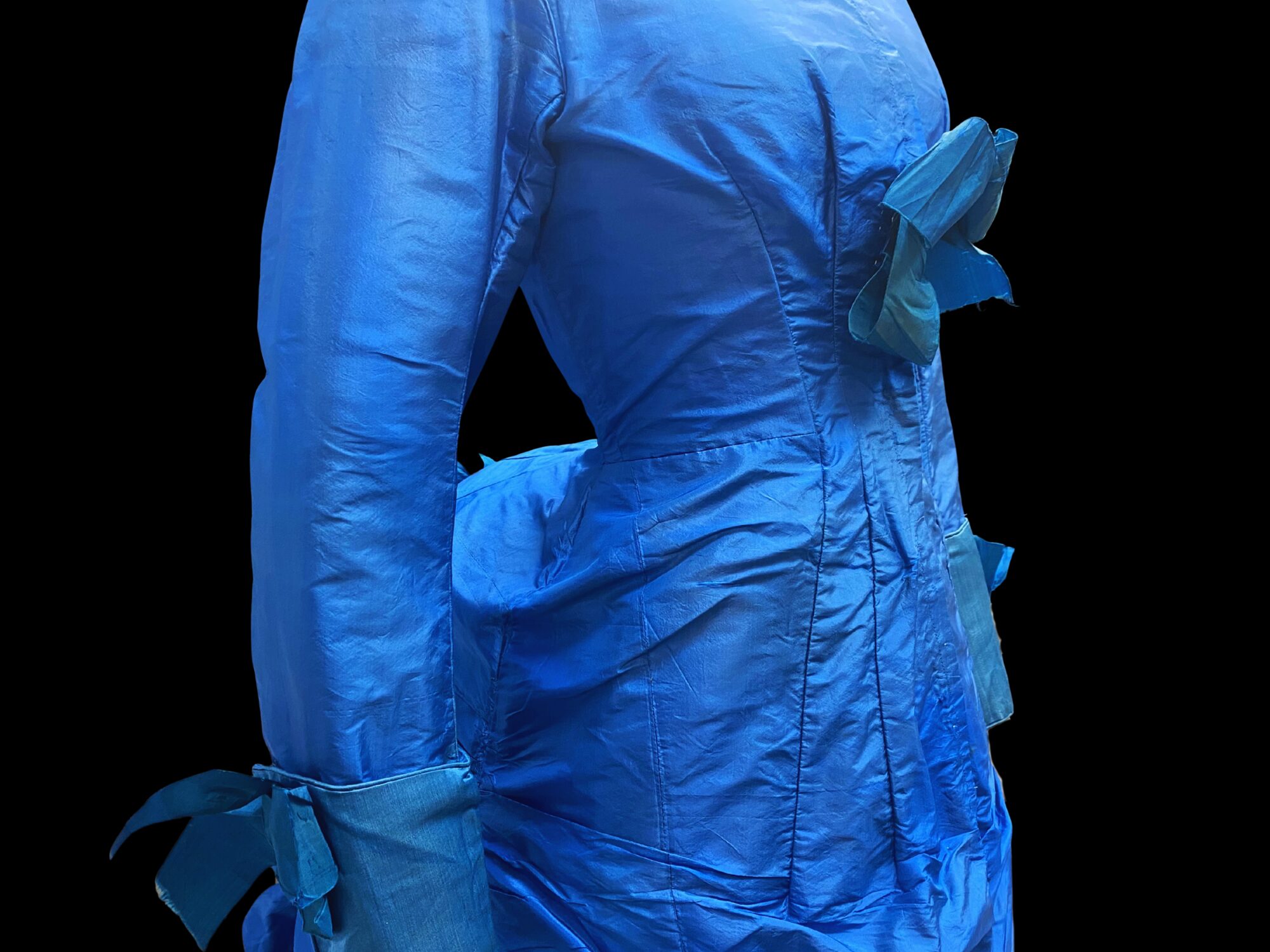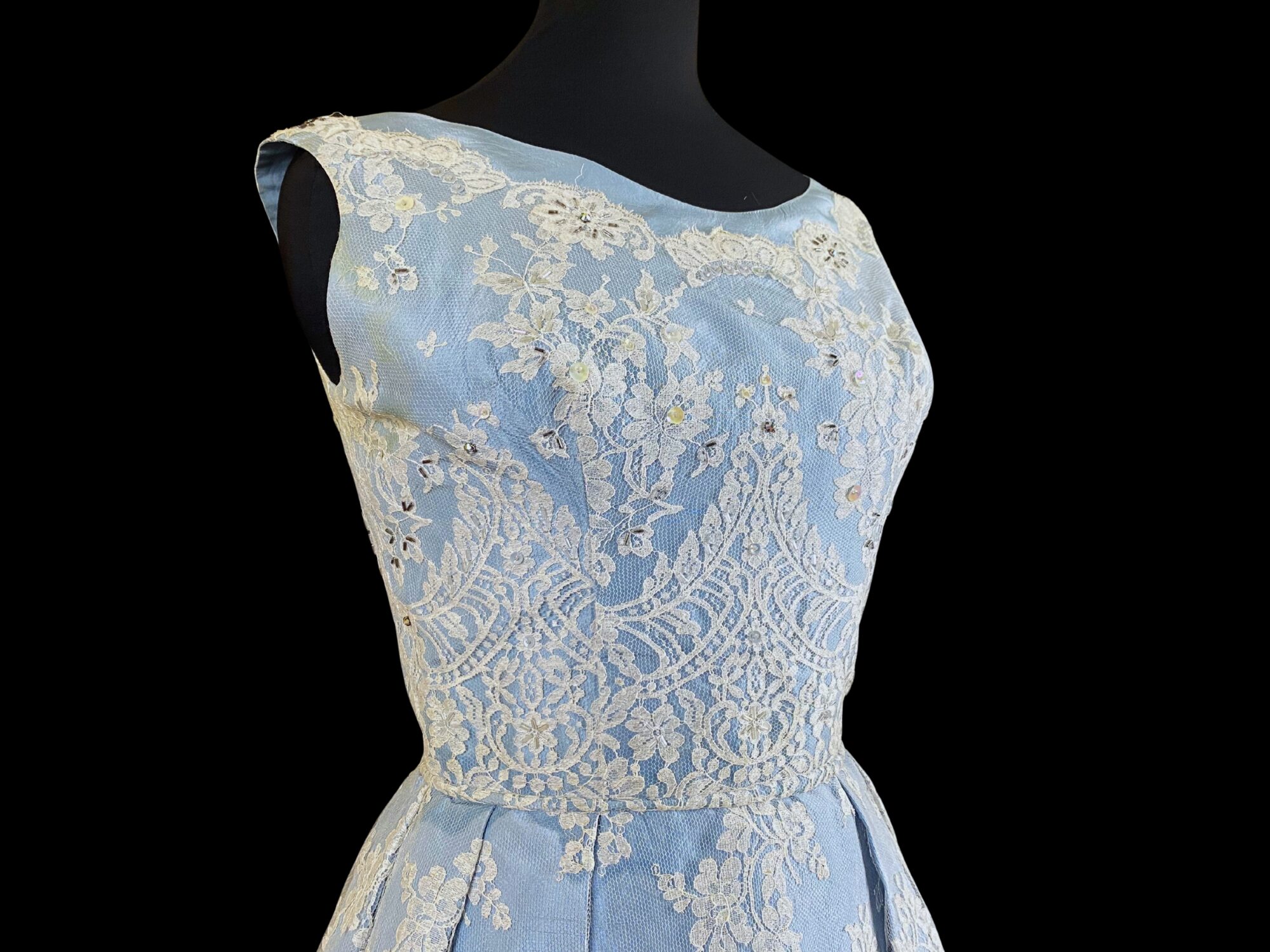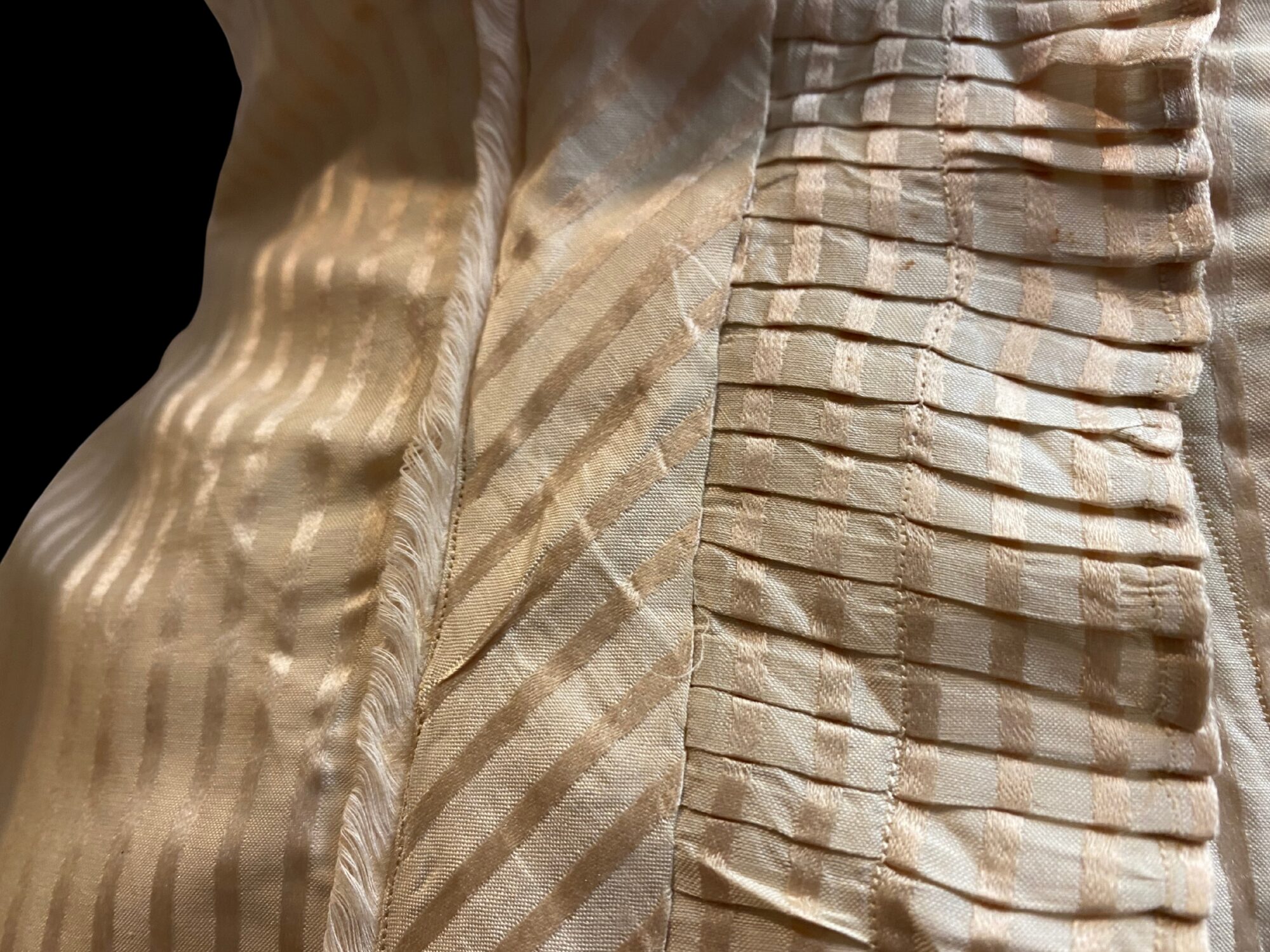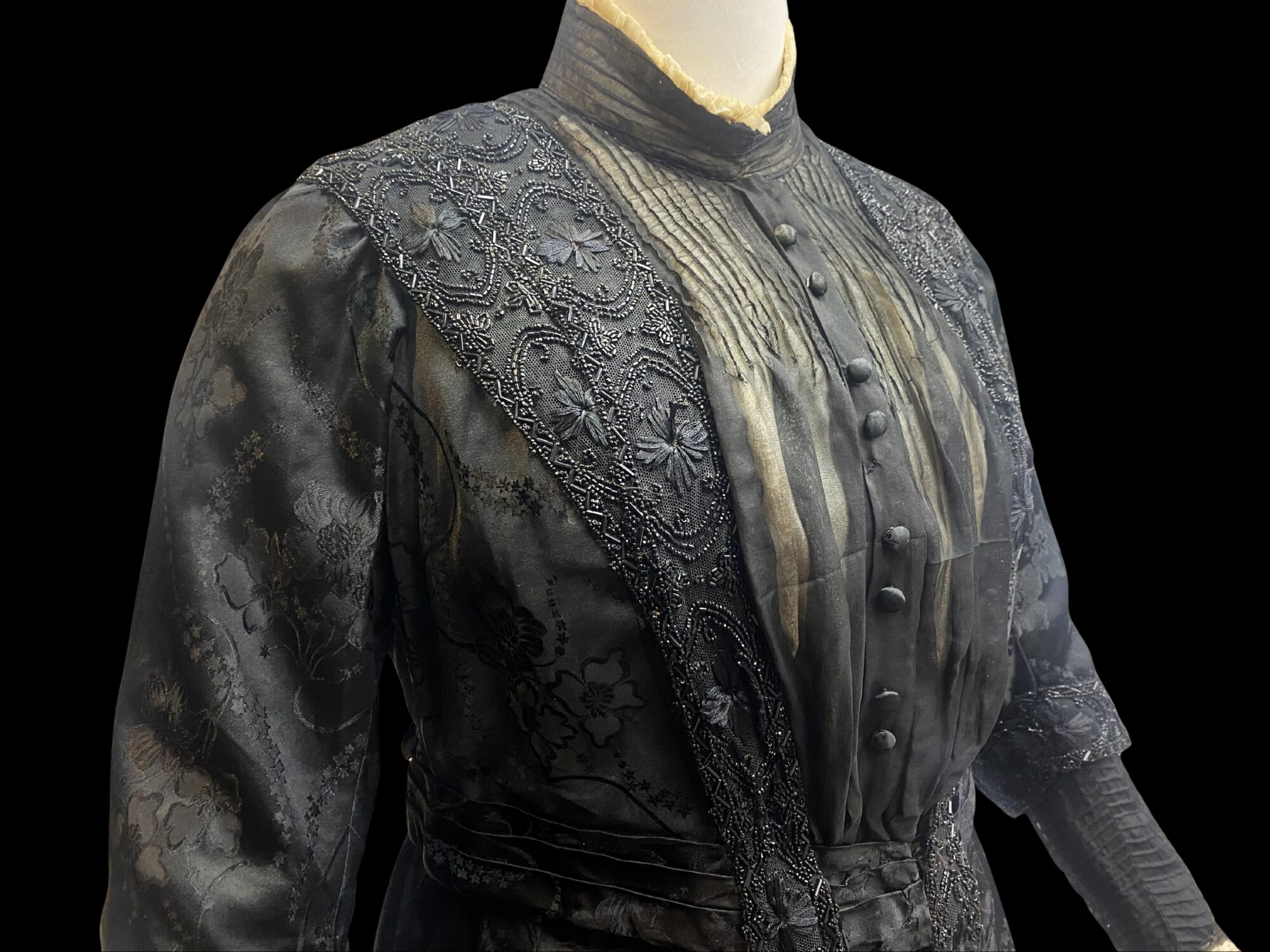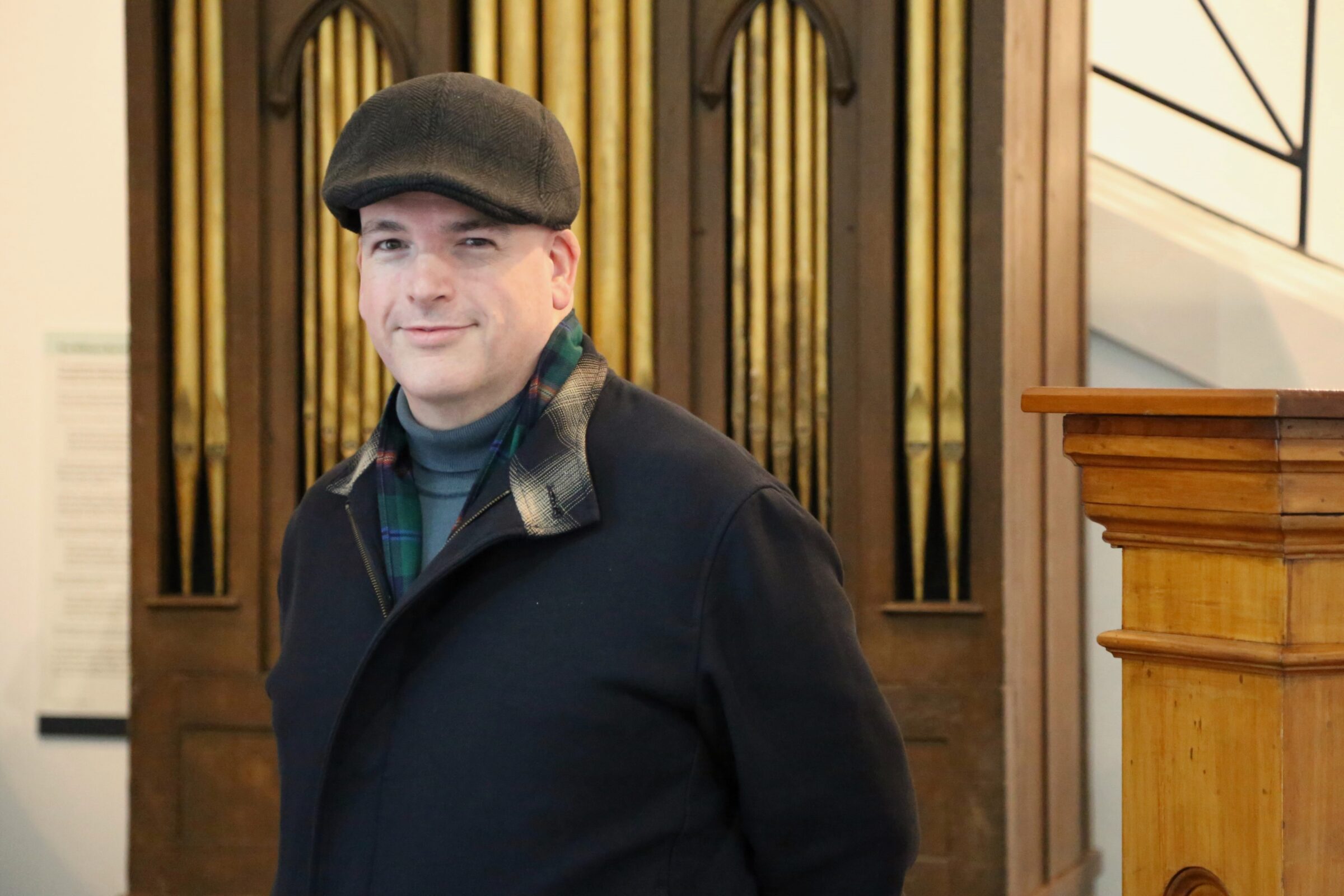Collection Stories
This dress is made from fine cotton lawn, beautifully decorated with cotton lace inserts, drawn cotton work and crocheted bobbles. Full length sleeves mirror the patterning on the dress.
The dress was worn by New Zealand poet Eileen Duggan (1894-1972) in about the mid-1920s when she would have been around 30. It is hand-sewn in three parts: a long bodice and a short skirt, to create a garment of distinctly 1920s styling. As there is no tailor’s or seamstress’s mark it must have been made by a very competent sewer. One of the most alluring features of this dress is the richness of its colour. It appears that the maker dyed the dress in the gold colour – all the pieces are exactly the same hue.
In the 1920s dresses became simpler and shorter, especially compared with the complicated outfits women wore before the First World War, when corseting and lots of petticoats were still fashionable. The classic 1920s ‘flapper’ style is synonymous with beaded dresses for the evening. For daytime events such as a tea party or garden party, lighter dresses with more modest necklines, longer sleeves and simple loose silhouettes were common. Eileen Duggan would have most likely worn a petticoat under this, so that the lace inserts did not reveal her skin, as well as a matching coat.
Eileen Duggan was the most well-known New Zealand poet in the 1930s-1940s, both at home and overseas. Her reputation and influence as a specifically New Zealand poet and writer were international. She published five volumes of poetry between 1922 and 1951. In 1937 she was appointed Officer of the Order of the British Empire (OBE) for her contributions to literature in New Zealand. She was made an honorary fellow of the Royal Society of Literature (London) in 1943.
Eileen Duggan was born and brought up by the banks of the Wairau River in Malborough. She earned an MA in History from Victoria University College and attended Wellington Teachers Training College. She taught only briefly, however, and became one of few writers of her time to earn her living solely from writing. As well as poetry, she wrote literary and historical essays, critiques and published a weekly column in the Catholic newspaper, New Zealand Tablet.
From a devout Irish Catholic family, while Duggan’s poetry echoed her religious and cultural upbringing, she often used Māori words as part of her poetic vernacular to describe the natural world, rather than their English equivalents. For around 40 years she wrote about landscape and being a New Zealander, and she wrote poems for children and poems for great occasions. The Second World War greatly affected her generally optimistic outlook but her poetry benefitted as she reflected about the human consequences of war in a more pared down and concise style, which aligned with more contemporary tastes.
Eileen Duggan’s long-time friend, Grace Burgess, donated the dress to the Whanganui Regional Museum in 1984. In 1981 Burgess published a short memoir on the life of the poet titled, A gentle poet: a portrait of Eileen Duggan OBE.
By Libby Sharpe, Pou Tiaki/Senior Curator at Whanganui Regional Museum at the time of writing.
Image: Dress worn by poet Eileen Duggan
Mid 1920s. Designer and maker unknown.
Photographed by Kathy Greensides
WRM 1984.74.1
View the full-length image.


